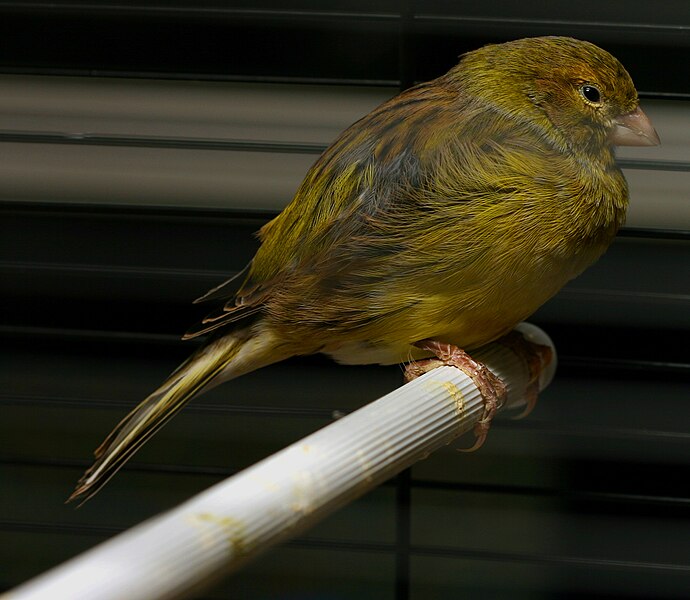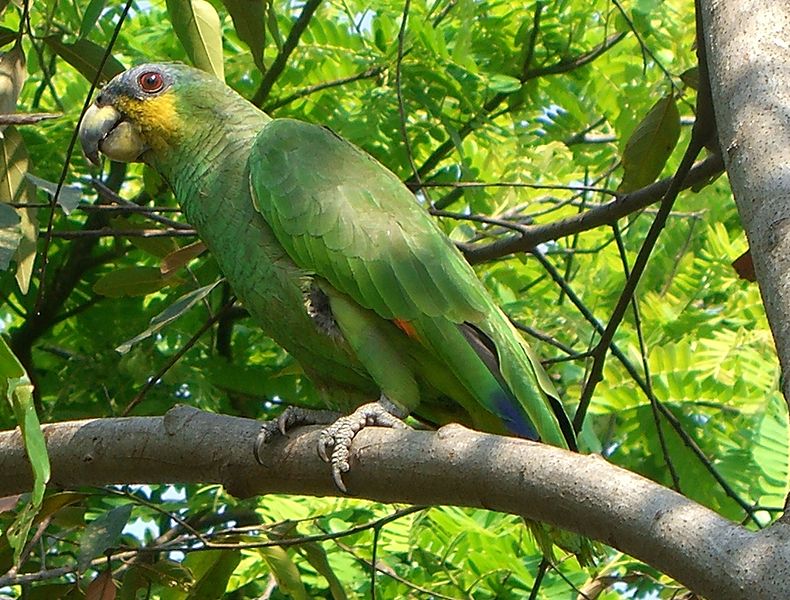Please see Part 1 of this article for information on the natural history and captive breeding of the brilliantly-colored Strawberry Finch (Amandava amandava). I relayed there that my first experiences with wild-caught Strawberry Finches left me with the impression that they are among the world’s most spectacularly-colored birds. However, captive-born individuals, while beautiful, often fall far short of the color standards set by their parents…today we’ll take a closer look at this phenomenon. Read More »
Category Archives: Bird Health
Feed SubscriptionWhen Your Canary Molts – Care and Diet Tips
 Molting season is a trying time for Canaries – after all, they are shedding and replacing over 2,000 feathers! Following are some steps you can take to lessen the stress of your pet’s annual molt.
Molting season is a trying time for Canaries – after all, they are shedding and replacing over 2,000 feathers! Following are some steps you can take to lessen the stress of your pet’s annual molt.
Timing of the Molt
Canaries molt once each year, usually in late summer or early fall. The process seems partially controlled by an “internal clock”, and usually occurs at the proper time, but external factors do have an influence. Molting out-of-season can negatively affect a bird’s health.
If your Canary is molting in winter or spring, try limiting its day to 8-10 hours of light, and keep the temperature at 68-70F. Full spectrum light (please see article below) is also helpful in establishing normal cycles and supports immune system functioning.<!–more–>
Stressful situations can cause partial or complete out-of-season molts. Fear (noise, another pet, moving), overly-warm temperatures, and too much light during the fall and winter are common causes of stress-induced molting.
Molting Behavior
Your Canary should complete its molt in 6-12 weeks. During that time, the feathers will appear loose and disheveled (please see photo) and it may become listless and less active than usual; males often cease singing. This is a normal response to the physical drain of growing so many new feathers; molting birds are also less capable of escaping predators, and so instinctively maintain a low profile.
Diet and Care
Despite being less active, your Canary’s need for protein and fat will soar during the molting season (feathers are 88-85% protein). Egg Food, oil-rich seeds such as niger, flax and hemp and small live or canned crickets and mealworms are important additions to the diet throughout the molting period.
A bath should always be available and will get frequent use during molting; specially formulated feather-sprays are useful in dry homes or for Canaries that appear to be slow in finishing their molts.
Further Reading
Feather-related ailments can mimic bad molts and need to be addressed by a veterinarian. Please see this article for info on French Molt.
Full Spectrum Lighting for Pet Birds
Domestic Canary image referenced from wikipedia and originally posted by L.E. MacDonald
Useful Tips and Products for Feeding Wild Birds this Autumn

Parrot Toys – Study Shows Orange-Winged Amazons Have Distinct Preferences
 Toys are more than just “time fillers” for parrots. Social and highly intelligent, pet parrots suffer badly when bored, and soon exhibit destructive behaviors or stress-related illnesses. Zoos are now requiring that toys and foraging opportunities (they call it “Behavioral Enrichment”, sounds better in journals!) be provided to animals ranging from frogs to elephants. A study recently published in Applied Animal Behavior Science (V.120, N.3) has revealed that, at least for Orange-Winged Amazon Parrots (Amazona amazonica, please see photo), all toys are not created equal.
Toys are more than just “time fillers” for parrots. Social and highly intelligent, pet parrots suffer badly when bored, and soon exhibit destructive behaviors or stress-related illnesses. Zoos are now requiring that toys and foraging opportunities (they call it “Behavioral Enrichment”, sounds better in journals!) be provided to animals ranging from frogs to elephants. A study recently published in Applied Animal Behavior Science (V.120, N.3) has revealed that, at least for Orange-Winged Amazon Parrots (Amazona amazonica, please see photo), all toys are not created equal.
Parrot Preferences: What and Why
The study compared the reactions of parrots to wooden toys differing in size, color and harness and to rawhide toys that varied in color. The toys were attached to computer-monitored switches, so that the birds’ reactions would not be influenced by observers, and could be recorded round-the-clock. Read More »
UV Sensitivity in Parrots and UV Protection for People – A Relationship?
 We’ve known for some time now that the eyes of Budgerigars and African Gray Parrots are UV-sensitive and can detect UV light. Humans cannot, but like parrots we are active by day and exposed to UV light throughout our lives. In many cases, parrot and human life-spans are similar in length, yet, in contrast ourselves, our avian friends’ eyes do not suffer UV damage. A study at the University of West Australia is seeking to find out why. Read More »
We’ve known for some time now that the eyes of Budgerigars and African Gray Parrots are UV-sensitive and can detect UV light. Humans cannot, but like parrots we are active by day and exposed to UV light throughout our lives. In many cases, parrot and human life-spans are similar in length, yet, in contrast ourselves, our avian friends’ eyes do not suffer UV damage. A study at the University of West Australia is seeking to find out why. Read More »
 That Bird Blog – Bird Care and History for Pet Birds
That Bird Blog – Bird Care and History for Pet Birds
